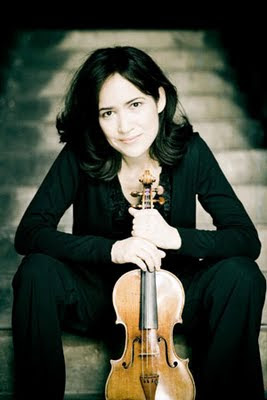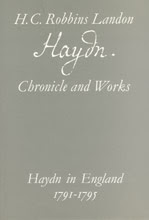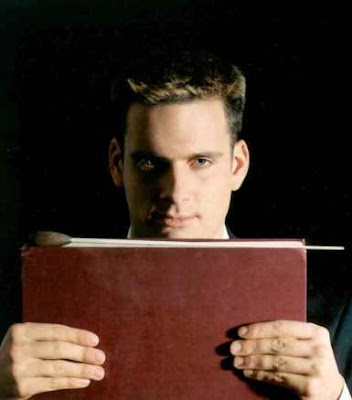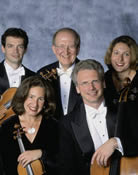“I wouldn't suggest the racetrack as the incubator and inspirer of poetry. I just say it might work for me—sometimes. Like beer, or [enjoying] a good woman, cigars, or Mahler with good wine and the lights out, sitting there naked watching the cars go by…” (
Los Angeles Free Press, March 3, 1967)
Charles Bukowski might seem an unlikely source of insight about classical music, but he was an avid listener—especially to classical music on the radio—and he had a naturally discriminate ear. “Bach is the hardest to play badly because he made so few spiritual mistakes” is only one astute point among his 15 “Observations on Music” (from
Sifting through the madness for the word, the line, the way). That Bukowski couldn’t mention Haydn without also using the F-word or a raunchy equivalent in the same sentence doesn’t take away from those insights.
Among his most cherished composers—and the one with the most references in his works—is Gustav Mahler. If “the struggle, the crisis of identity and faith, the uncertainties and the challenge of a creeping modernism that undermined life as people knew it… all seem to be reflected in the clashes and crashes of Mahler’s symphonies” (
Mahler Introduction), then it isn’t terribly surprising that Bukowski responded to Mahler so strongly, even well before Mahler’s music had achieved the wide spread popularity it enjoys today.
Mahler was always one
of my favorites.
it's possible to listen to
his works again and
again and
again without
tiring of them.
I don’t agree with that (anymore), but it’s the pithiest reference to Mahler in Bukowski I know. Unless that very apt picture of Mahler as the dinner guest already at the door, who takes an hour saying goodbye, is also from Bukowski, as I seem to very faintly remember.
That Mahler has influenced other artists isn’t surprising. Just as Mahler soaked up the music in his sphere, they soaked up his music to make it their own. I’d like to think that Bukowski, quite accustomed with earthy language, might have responded well to the subcutaneous vulgarity present in Mahler. Mahler--the crude juxtapositions in his music, the banalities that are
just saved by their presumed irony--had been thought a vulgar composer well into the 60s. I never understood that sentiment until I watched Unitel’s DVD of Leonard Bernstein conducting the Sixth Symphony at the Musikverein in Vienna. The orchestra plays with some reluctance, the brash orchestral effects suddenly begin to sound like crude kitsch, and even the walls of the Golden Hall look like the seedy interior of a brothel, with Bernstein as the charming pimp in lead.
Uri Caine is a Philadelphia born avant-garde jazz artist from New York with a penchant for classical music, unsurprising given that his composition teachers were George Crumb and
George Rochberg.
Mozart,
Wagner,
Beethoven,
Bach,
Schumann have all inspired him to absorb and creatively regurgitate their music. The result is music unlike any you have ever heard, which is as high a compliment as I know of. His best ‘crossover’ work might well be that with Mahler. His treatment of the source material is an
ethnomusicological exploration of Mahler, at once reverent, insightful, and flimsy. Uri Caine’s distortion, modification, deconstruction and reassembly doesn’t obscure the Mahler beneath it, it actually allows for deeper insights into what it is we hear in Mahler. All the Jewish and Klezmer influences emerge vividly. And whether it’s “Liebst Du um Schönheit” as a gospel collage or the “Adagietto” taken apart into individual piano notes, suspended like a mobilé, it’s always Mahler from a new angle, always surprising and delightful to the ears. I’ve come to appreciate and even love most, maybe all his ‘crossover’ albums—but his primary Mahler disc,
Urlicht, remains at the top of the heap; among the handful of favorite recordings I own.
A different way to get at the Jewish and Yiddish musical roots of Mahler is by hearing the music from the same tradition that has been written at Mahler’s time or since. The Vogler Quartet plays a recital of such music
Thursday night at the Kennedy Center’s Terrace Theater. It is based on the music played by the Russian-Jewish Zimro Ensemble, a string quartet, clarinetist, and pianist that Prokofiev heard on their American tour in 1919. Their mission was to maintain a level of excellence in the “New Jewish School” of music with strong roots in Jewish folk music. Sponsored by Zionist Organizations around the world, and intent of touring their way to Palestine, they performed only music approved by the
St.Petersburg Society of Jewish Folk Music. Along their American tour they greatly impressed Prokofiev who consequently wrote his Overture on Hebrew Themes for them. In the end they never made it quite to Palestine, because Simeon Bellison was snagged by the New York Philharmonic as solo clarinetist.
The Vogler Quartet (
excellent Thuille!) is on their own Zimro tour now, performing the works the original ensemble (and its successor ensembles) played—
Ekht-Jewish music from composers such as Grigori Krejn, Julius Chajes, Joseph Achron—and of course Prokofiev. If you can’t make the concert, the same musicians have released that program on a wonderful CD as well, which is what backs up my enthusiasm about their (Mahler-related) program tomorrow.
For the 125
th anniversary of the New York Philharmonic in 1967, Luciano Berio composed (albeit missing the deadline)
Sinfonia, a four-, then five-movement work for orchestra and amplified voices. There is a very decent
Wikipedia article on the piece, that goes well beyond describing that the third movement of
Sinfonia is a quixotic pastiche of the third movement from Mahler’s Second Symphony, cut up, re-imagined, and spliced with quotations from a dozen other composers. Next to his Schubert-realization
Rendering,
Sinfonia remains one of Berio’s most accessible and most easily enjoyable pieces.
The Berio-Mahler connection can be further explored on one of the four superb Frank Scheffer documentaries on Mahler that I’d like to mention. While three of those four “Juxtaposition” films—from a series that always couples two more or less related subjects to another—don’t relate directly to the music he influenced or was influenced by, they are DVD gold when it comes to delving fully into Mahler and assuming you are already a fan.
Attrazione D’Amore is a film on Riccardo Chailly, ‘his’ Concertgebouw (at the time), and Mahler. A touch of hagiography, but splendid all the same. Coupled to it is
Voyage to Cythera, about Berio and
Sinfonia. The other coupling consists of
Conducting Mahler—with Muti, Chailly, Rattle, Abbado, and Haitink rehearsing their orchestras in Mahler, opining along the way—and
I Have Lost Touch With the World about Mahler’s 9
th and Chailly.






































































